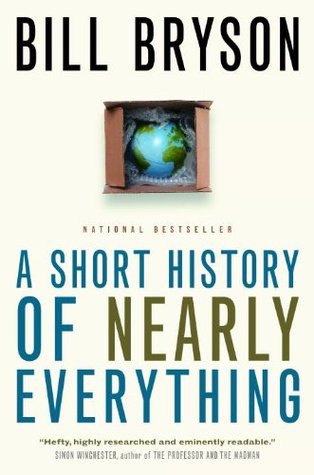More on this book
Community
Kindle Notes & Highlights
According to Newton's theory, the centrifugal force of the Earth's spin should result in a slight flattening at the poles and a bulging at the equator, which would make the planet slightly oblate. That meant that the length of a degree wouldn't be the same in Italy as it was in Scotland. Specifically, the length would shorten as you moved away from the poles.
It think he has the sign wrong. If the Earth is oblate, the length of a degree is shortest at the poles and longest at the equator. NO, OK, I understand it now. Let's take the latitude to be the angle of a normal to the surface. Then, because the surface is flattened at the pole, you need to travel a little further for it to rotate by a degree at the pole than at the equator.
second French team, taking measurements in northern Scandinavia (and facing notable discomforts of their own, from squelching bogs to dangerous ice floes), had found that a degree was in fact longer near the poles, as Newton had promised.
Dalton's Law of Partial Pressures, Richter's Law of Reciprocal Proportions, Charles's Law of Gases,
Dalton's Law of Partial Pressures: the total pressure of a mixture of non-reacting gases is equal to the sum of the partial pressures of the individual gases.Law of reciprocal proportions:If element A combines with element B and also with C, then, if B and C combine together, the proportion by weight in which they do so will be simply related to the weights of B and C which separately combine with a constant weight of A.Charles's Law of Gases:When the pressure on a sample of a dry gas is held constant, the Kelvin temperature and the volume will be in direct proportion.
Earth has seen five major extinction episodes in its time—the Ordovician, Devonian, Permian, Triassic, and Cretaceous, in that order—and many smaller ones. The Ordovician (440 million years ago) and Devonian (365 million) each wiped out about 80 to 85 percent of species. The Triassic (210 million years ago) and Cretaceous (65 million years) each wiped out 70 to 75 percent of species. But the real whopper was the Permian extinction of about 245 million years ago, which raised the curtain on the long age of the dinosaurs. In the Permian, at least 95 percent of animals known from the fossil
...more
Charles Robert Darwin was born on February 12, 1809,*41
One thing that would help to resolve matters would be evidence of interbreeding, but that is not at all easy to prove, or disprove, from fossils.
This refers to interbreeding between Neanderthal and sapiens. Genome sequencing is a better way to address the question, and "Neanderthals are known to contribute up to 1-4% of the genomes of non-African modern humans, depending on what region of the word your ancestors come from, and modern humans who lived about 40,000 years ago have been found to have up to 6-9% Neanderthal DNA (Fu et al., 2015)."https://humanorigins.si.edu/evidence/genetics/ancient-dna-and-neanderthals
Ian Tattersall declared it to be nothing more than “a chunky modern child.” He accepts that there may well have been some “hanky-panky” between Neandertals and moderns, but doesn't believe it could have resulted in reproductively successful offspring.*49 “I don't know of any two organisms from any realm of biology that are that different and still in the same species,” he says.
*41An auspicious date in history: on the same day in Kentucky, Abraham Lincoln was born.


